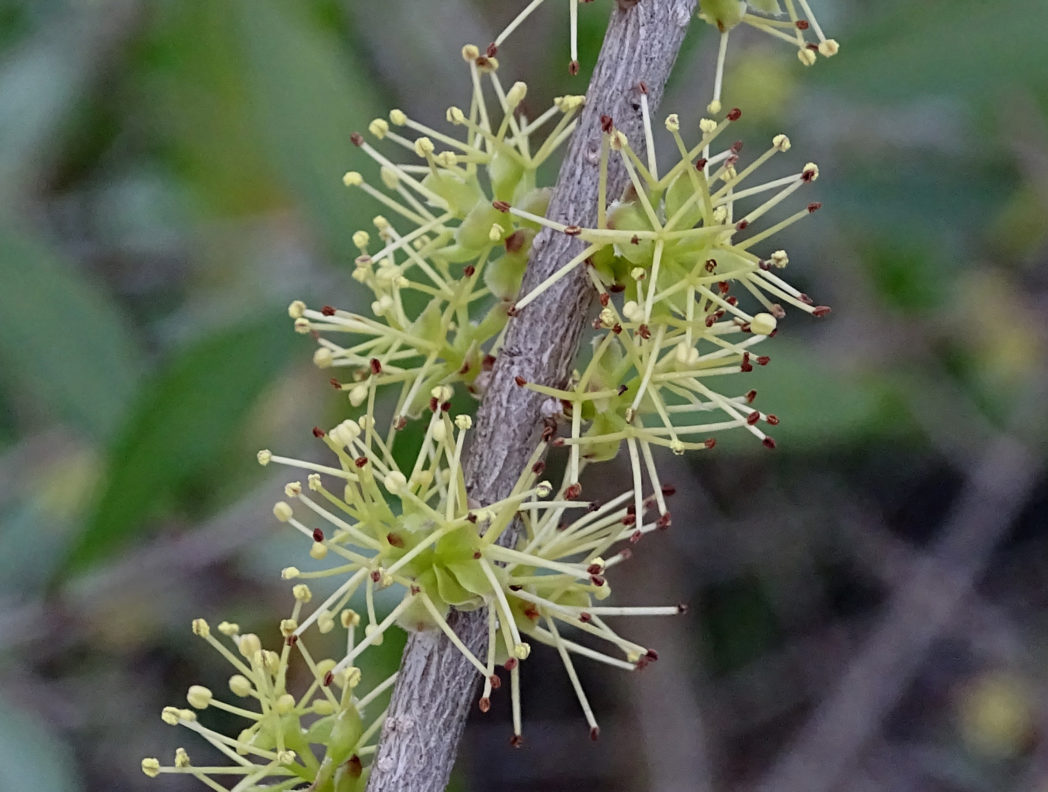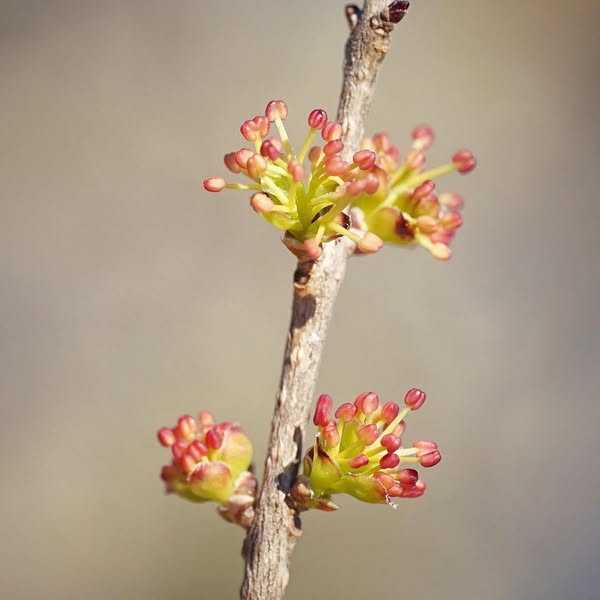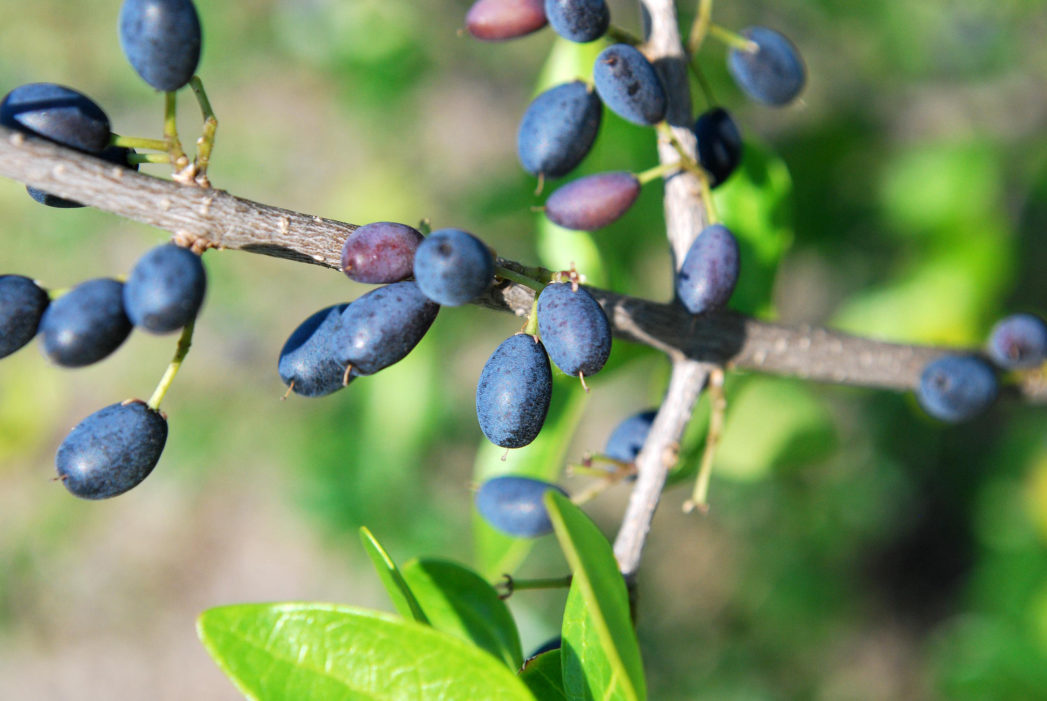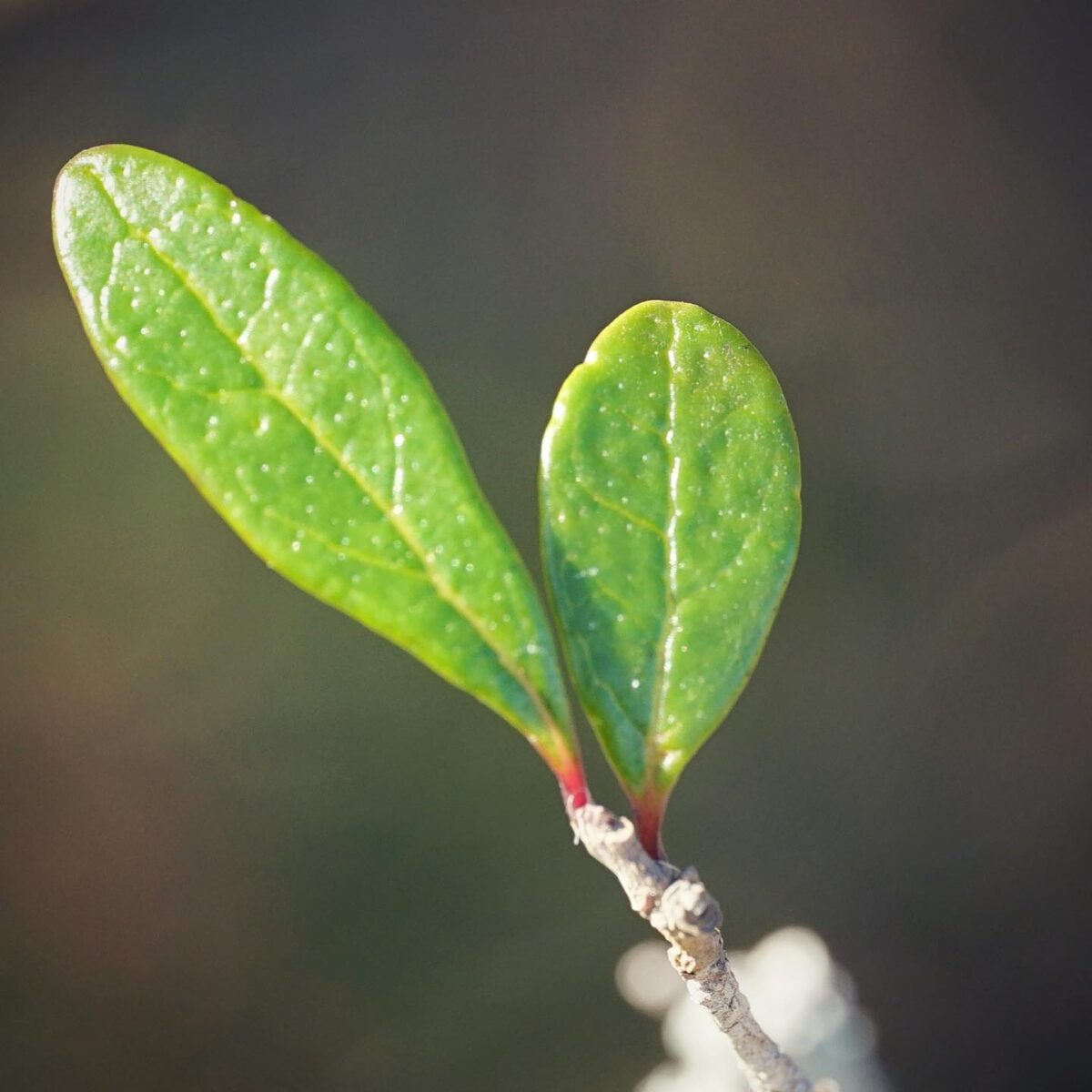Florida swampprivet
Pictured above: Florida swampprivet (Forestiera segregata) by Ryan Fessenden. Click on terms for botanical definitions. View post as a PDF.
Florida swampprivet (Forestiera segregata) is an evergreen shrub to small tree that occurs naturally in coastal hammocks, thickets, scrub and pine rocklands. Flowers typically appear in early spring before leaves emerge, but the plant may bloom year-round. Bees and butterflies are attracted to the flowers. Birds and small mammals use the dense foliage for cover and are partial to the abundant fruit that ripens in early summer when few fruits are available.
Florida swampprivet’s tiny flowers are greenish-yellow and born in axillary clusters. Stamens are extended and bifurcated with orange or brown anthers. The plant’s simple leaves are oblong to elliptic with blunt tips and entire margins. Undersides are finely punctate. Leaf arrangement is opposite. Bark is thin and grayish-brown. Fruits are purple to blackish-blue olive-like berries that are about ½ inch long. Each berry contains a single seed.
The genus name Forestiera pays homage to the 18th century French botanist and physician André Robert Forestier.
Family: Oleaceae (Olive family)
Native range: Coastal peninsular counties from Duval and Dixie south to the Keys
To see where natural populations of Florida swampprivet have been vouchered, visit florida.plantatlas.usf.edu.
Lifespan: Perennial
Soil: Moist to dry, well-drained sandy, loamy or calcareous soils
Exposure: Full sun to partial shade
Growth habit: 10–15’ tall with spread of 5–10’
Propagation: Seed
Florida regions of landscape suitability: North (peninsular), Central, South
Garden tips: Florida swampprivet is relatively maintenance free once established. It is ideal for the shady edge of a garden and works well in a buffer or hedge or as a specimen plant. The plant can be pruned to a desired height or shape. It is dioecious, which means both a male and female specimen are needed to ensure pollination and fruit. Florida swampprivet is drought and salt tolerant. It is generally evergreen but may be deciduous in northern climes.
Florida swampprivet is available from nurseries that specialize in Florida native plants. Visit www.PlantRealFlorida.org to find a nursery in your area.
Learn more about Florida swampprivet from the Florida Native Plant Society and the Institute for Regional Conservation.




